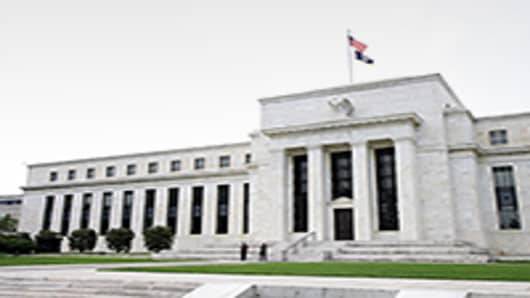1. Open-Ended Expansion. In the past, when the Fed announced a Large Scale Asset Purchase program—LSAP, in Fed speak—it indicated its maximum size and duration. Sometimes it revisited the duration or size, expanding the programs as necessary.
But this time, the Fed has explicitly declared that the LSAPs will continue until economic conditions improve. What’s more, the Fed said it would undertake additional LSAPs and employ “other policy tools” so long as the economy is underperforming. There are no definite size or time limits on QE3—prompting some to call it QE-Infinity.
2. Targeted at Labor Market. Perhaps even more importantly, the Fed’s policy is very explicitly tied to the labor market.
“If the outlook for the labor market does not improve substantially, the Committee will continue its purchases of agency mortgage-backed securities, undertake additional asset purchases, and employ its other policy tools as appropriate until such improvement is achieved in a context of price stability,” the Fed said in its official statement.
This explicit tying of the LSAP to the labor market is unprecedented.
Not only has the Fed never done this in the past, but no other central bank has launched a quantitative easing program with such an explicit link to jobs.
Notice that the Fed is saying it will keep its LSAPs until the outlook for labor improves “substantially.” This sets up a new baseline for Fed policy: quantitative easing will continue until the jobs market is much better than it is today. Policy is now biased in favor of quantitative easing. The burden of proof is not on those who want asset buying—its on those who want to halt quantitative easing.
Further demonstrating this new focus on jobs, in his press conference following the announcement, Ben Bernanke led off talking about the unemployment rate.
“The weak job market should concern every American,” Bernanke said.
3. Not Tied To New Weakness. The Fed’s statement was actually pretty upbeat about the economy.
Information received since the Federal Open Market Committee met in August suggests that economic activity has continued to expand at a moderate pace in recent months. Growth in employment has been slow, and the unemployment rate remains elevated. Household spending has continued to advance, but growth in business fixed investment appears to have slowed. The housing sector has shown some further signs of improvement, albeit from a depressed level. Inflation has been subdued, although the prices of some key commodities have increased recently. Longer-term inflation expectations have remained stable.
The only downbeat note there is about the jobs market. But that’s hardly news.
The academic literature about monetary accommodation makes it very clear why the Fed would want to sound upbeat about the economy while announcing a new LSAP. The Fed always runs the risk that markets will see an announcement of new easing as a sign that the economy is slowing, causing businesses and consumers to tighten their belts in anticipation of hard times. This can have the effect of somewhat undermining the Fed’s attempt to speed up the economy.
What the Fed did today was announce that its policy was not based on a forecast of things getting worse—but on a desire for things to improve faster. In short, it announced that the central bank intended to change the pace of recovery.
This is a bold new world for Fed policy.
- by CNBC.com senior editor John Carney
Follow John on Twitter. (Market and financial news, adventures in New York City, plus whatever is on his mind.) You can email him at john.carney@nbcuni.com.
We also have two NetNet Twitter feeds. Follow CNBCnetnet for the best of the days posts, including breaking news. Follow NetNetDigest for a feed of every single post each day.
You can also be our friend on Facebook. Or subscribe to John's Facebook page.
We're on Google Plus too! Click here for John's Google+ page.
Questions? Comments? Tips? Email us atNetNet@cnbc.comor send a text message to: 917-740-8477.
Call us at 201-735-4638.



